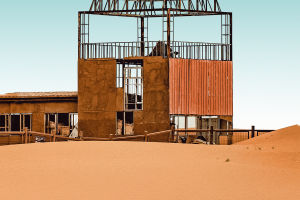The horse deer is the second largest deer species after the moose, with eight subspecies, and is named because it resembles a horse.
The antlers of the horse deer are so large that only males have them, and the heavier the individual, the larger the antlers.
When the breeding season is over, the male sheds his antlers and a new one grows the following year.
Antlers and powerful foreleg kicks are good defensive weapons, and males and females will use them to attack when provoked.
Once antlers are shed, males tend to form single groups, allowing them to cooperate to defend themselves against predators.
Horse deer live in high mountain forests or grassland areas, like to live in groups, mostly at night and early morning activities in summer, more in the daytime activities in winter, good at running and swimming.
In summer, horse deer feed almost constantly, consuming 4-7 kg of plants per day. They eat grass in summer and woody plants in winter.
Horse deer are ruminants, regurgitating food and re-chewing it to aid digestion.
Horse deer often lick and even eat the rotten mud in salty, low-wet areas, and sometimes go to marshes and shallow waters for water bathing in summer.
Like many deer species, especially in mountainous areas, the horse deer often changes its living ring with different seasons and geographical conditions.
Among the various elements of habitat selection, seclusion conditions, water sources, and food abundance are the most important indicators.
Migration to higher elevations occurs in the spring as the snow subsides, and vice versa in the fall.
Hunting pressure can also affect migration and relocation.
They are particularly fond of environments such as thickets and grasslands, which are conducive to concealment and have better food conditions.
However, if food is poorer, they can also move to habitats such as deserts, reed grasses, and agricultural fields. Because of the small seasonal variation in food sources, Roosevelt's horse deer usually do not migrate.
In nature, natural predators include bears, leopards, jackals, wolves, lynxes, and other fierce animals, but because of their alert nature, rapid running, acute hearing and smell, strong physical strength, and huge antlers as weapons, horse deer can also fight with predators.
The Rocky Mountain Horse Deer is the official animal of Utah, and images of horse deer and moose appear on the state coat of arms and state flag of Michigan, USA.


